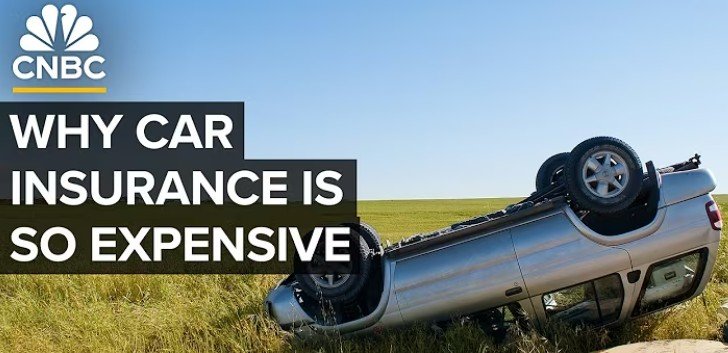Introduction
Auto insurance is an essential part of owning and driving a vehicle. It not only protects you financially in the event of an accident but also ensures that you comply with state and federal regulations. Whether you’re a new driver or someone looking to optimize your current policy, understanding the ins and outs of auto insurance is crucial.
In this comprehensive guide, we’ll cover everything from the basics of auto insurance, types of coverage, how rates are determined, ways to save money, and how to choose the best provider. Let’s drive into the details.
Table of Contents
- What is Auto Insurance?
- Why Auto Insurance is Important
- Types of Auto Insurance Coverage
- Liability Coverage
- Collision Coverage
- Comprehensive Coverage
- Personal Injury Protection (PIP)
- Uninsured/Underinsured Motorist Coverage
- Gap Insurance
- Towing and Labor
- How Auto Insurance Works
- What Factors Affect Auto Insurance Rates?
- How to Compare Auto Insurance Quotes
- Tips for Saving on Auto Insurance
- Common Auto Insurance Myths Debunked
- Auto Insurance Laws by State
- Filing a Claim: Step-by-Step
- Auto Insurance for Special Cases
- Teen Drivers
- Senior Citizens
- High-Risk Drivers
- Ride-Sharing and Commercial Use
- Choosing the Right Auto Insurance Provider
- Top Auto Insurance Companies in 2025
- Conclusion
1. What is Auto Insurance?
Auto insurance is a contract between a vehicle owner and an insurance company. In exchange for paying a premium, the insurance company agrees to cover certain financial losses related to the insured vehicle. Coverage may include damage to your car, damage to others’ property, medical bills, and more, depending on your policy.
2. Why Auto Insurance is Important
Auto insurance serves several critical purposes:
- Legal Requirement: Most states in the U.S. require at least liability insurance to drive legally.
- Financial Protection: Covers the cost of repairs, legal fees, and medical expenses.
- Peace of Mind: Reduces stress in case of an accident or vehicle-related incident.
- Asset Protection: Safeguards your investments if you’re found at fault.
Without auto insurance, you could be liable for thousands of dollars in damages and face legal penalties.
3. Types of Auto Insurance Coverage
Understanding the various types of coverage is essential for selecting a policy that meets your needs.
Liability Coverage
Mandatory in most states, liability insurance covers damages you cause to other people or their property. It’s divided into:
- Bodily Injury Liability (BIL): Covers medical costs for others injured in an accident you cause.
- Property Damage Liability (PDL): Pays for damage to others’ property.
Collision Coverage
Pays for damage to your own vehicle resulting from a collision, regardless of fault. This is especially important for newer or more valuable cars.
Comprehensive Coverage
Covers non-collision-related incidents such as:
- Theft
- Vandalism
- Fire
- Natural disasters
- Falling objects
Personal Injury Protection (PIP)
Also known as “no-fault” insurance, PIP covers medical expenses for you and your passengers, regardless of who caused the accident. Some policies also cover lost wages and funeral expenses.
Uninsured/Underinsured Motorist Coverage
Protects you if you’re in an accident with someone who either doesn’t have insurance or doesn’t have enough to cover the damages.
Gap Insurance
If you owe more on your car loan than your car’s current value, gap insurance covers the difference. It’s often required if you lease or finance a vehicle.
Towing and Labor
An optional add-on that covers the cost of towing and roadside assistance services such as battery jump-starts, tire changes, and lockouts.
4. How Auto Insurance Works
Here’s how a typical auto insurance process works:
- Purchase a Policy: You select the coverage and limits that meet your needs and pay a premium.
- Accident Occurs: If you’re involved in an accident, you report the incident to your insurance company.
- File a Claim: Submit documentation and details of the accident.
- Investigation: The insurer investigates to determine fault and evaluate damages.
- Payout: If approved, the insurer pays for repairs, medical bills, or liability costs, minus your deductible.
5. What Factors Affect Auto Insurance Rates?
Insurers calculate premiums based on risk. Key factors include:
- Driving Record: Tickets, accidents, and DUIs increase premiums.
- Age and Gender: Young and male drivers often face higher rates.
- Location: Urban areas generally have higher premiums due to theft and accident rates.
- Vehicle Type: Expensive or high-performance cars cost more to insure.
- Credit Score: In many states, poor credit can increase your rate.
- Mileage: The more you drive, the higher the risk of an accident.
- Coverage Levels: Higher limits and additional coverage raise premiums.
6. How to Compare Auto Insurance Quotes
When comparing quotes, don’t just look at the price. Consider:
- Coverage Types and Limits
- Deductibles
- Discounts
- Customer Service Ratings
- Claims Satisfaction
- Financial Stability
Online comparison tools like NerdWallet, Policygenius, or The Zebra can help streamline the process.
7. Tips for Saving on Auto Insurance
Want to reduce your premium without sacrificing coverage? Try these tips:
- Bundle Policies: Combine auto with home or renters insurance.
- Increase Deductibles: Higher deductibles lower your premium.
- Take Defensive Driving Courses
- Maintain a Clean Driving Record
- Ask for Discounts: Look for good student, safe driver, and military discounts.
- Limit Coverage on Older Vehicles
- Pay Annually or Set Up Auto-Pay
- Shop Around Annually
8. Common Auto Insurance Myths Debunked
Myth #1: Red cars cost more to insure
Truth: Color has no effect on your rate.
Myth #2: Older drivers always pay less
Truth: Seniors may see increased rates due to reaction time concerns.
Myth #3: Minimum coverage is enough
Truth: It often doesn’t cover serious accidents, leaving you vulnerable.
Myth #4: Your policy covers rental cars automatically
Truth: Not always—check your terms or buy rental coverage separately.
9. Auto Insurance Laws by State
Every U.S. state has its own rules. For example:
- California: Requires liability but bans insurers from using credit scores.
- Florida: Uses no-fault insurance and requires PIP.
- Texas: Requires 30/60/25 liability coverage ($30K per injured person, up to $60K total per accident, $25K property damage).
Always verify your state’s current legal requirements through the Department of Motor Vehicles (DMV) or state insurance department.
10. Filing a Claim: Step-by-Step
- Ensure Safety: Move to a safe area and check for injuries.
- Call Authorities: File a police report, if required.
- Document Everything: Take photos, gather witness info.
- Notify Insurer: Call or use the app to begin a claim.
- Submit Documents: Include accident reports, photos, and medical records.
- Vehicle Inspection: An adjuster may inspect damages.
- Claim Approval: If approved, you receive compensation after deductible.
11. Auto Insurance for Special Cases
Teen Drivers
- High-risk due to inexperience.
- Encourage good grades for discounts.
- Add to a parent’s policy to save.
Senior Citizens
- Consider usage-based or low-mileage plans.
- Defensive driving refreshers can earn discounts.
High-Risk Drivers
- May need to use non-standard insurers.
- Consider improving your record with safe-driving habits.
Ride-Sharing and Commercial Use
- Personal insurance may not cover Uber/Lyft driving.
- Consider a commercial or ride-share endorsement.
12. Choosing the Right Auto Insurance Provider
Ask yourself:
- Are they financially stable? (Check AM Best ratings.)
- Do they have a good reputation?
- Are customer service reviews positive?
- Do they offer easy digital tools and mobile apps?
- Is their claims process simple and efficient?
13. Top Auto Insurance Companies in 2025
Here are some highly-rated providers based on customer satisfaction, affordability, and coverage:
- State Farm: Best overall for customer service and claims.
- GEICO: Affordable rates and tech-savvy options.
- Progressive: Great for high-risk drivers.
- Allstate: Wide range of add-ons and coverage.
- USAA: Top-rated for military families.
- Nationwide: Excellent for bundling and custom policies.
- Liberty Mutual: Strong for discounts and digital features.
14. Conclusion
Auto insurance is more than a legal requirement—it’s a financial safety net that protects you, your passengers, and your assets. By understanding the different coverage options, how premiums are calculated, and ways to save, you can make informed decisions that keep you protected on the road.
Before you buy or renew your auto insurance policy, take the time to compare quotes, read reviews, and assess your own needs. A little research now can lead to big savings and better peace of mind later.







